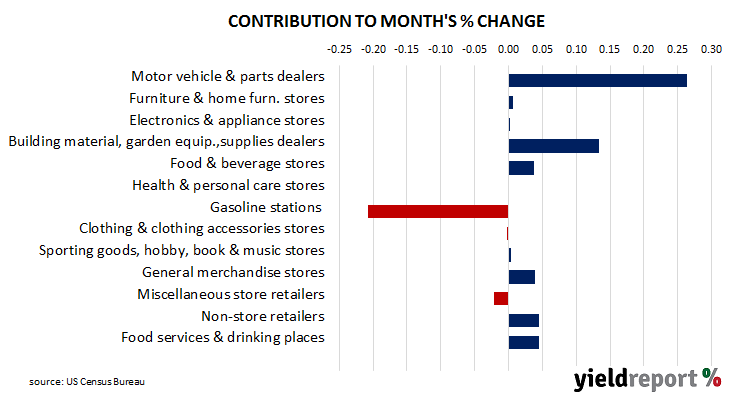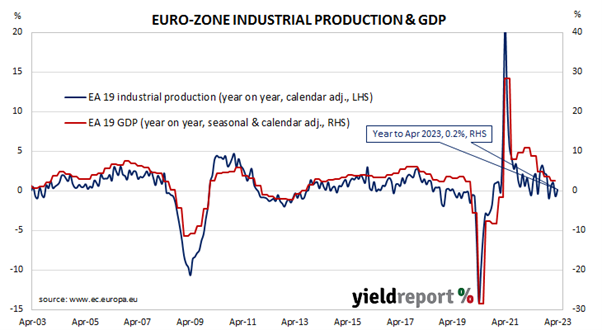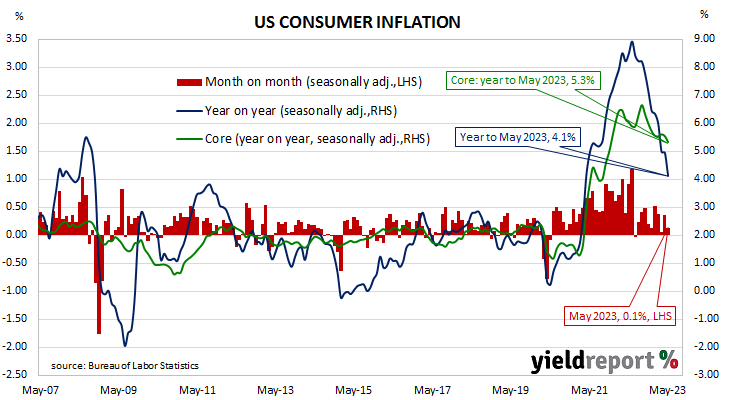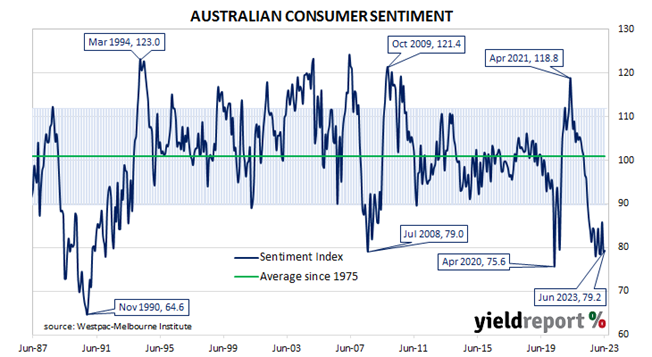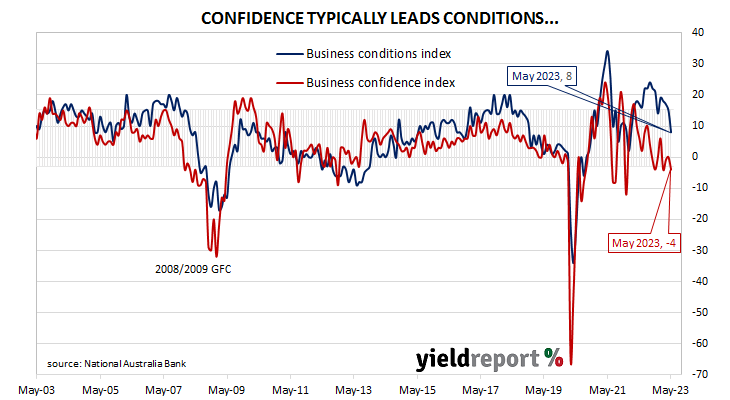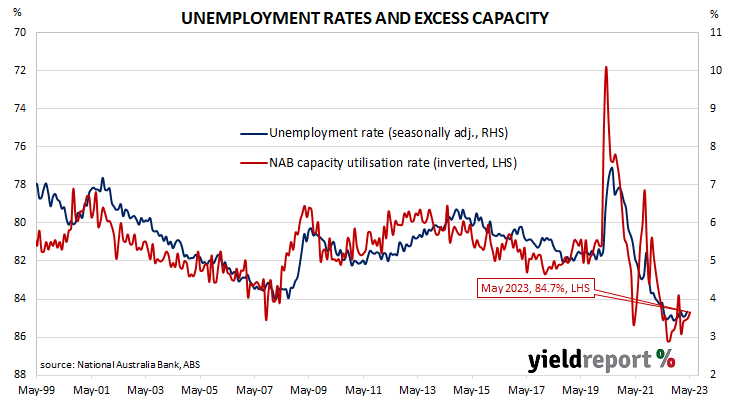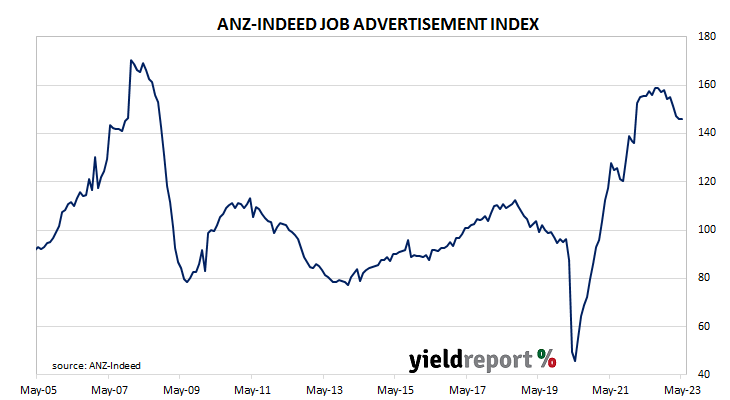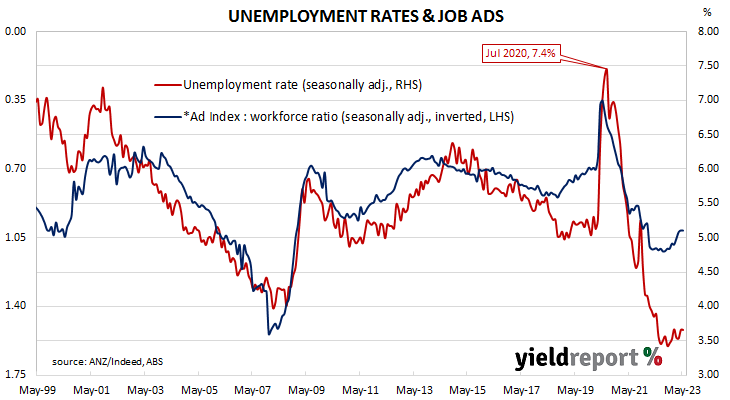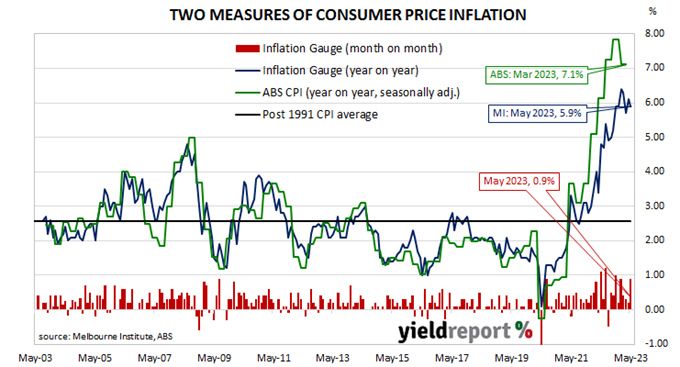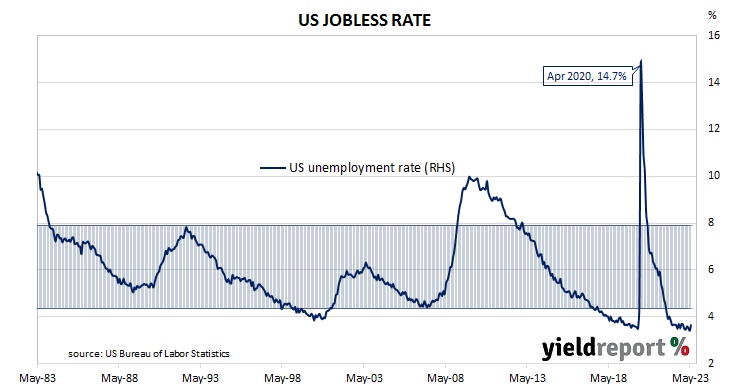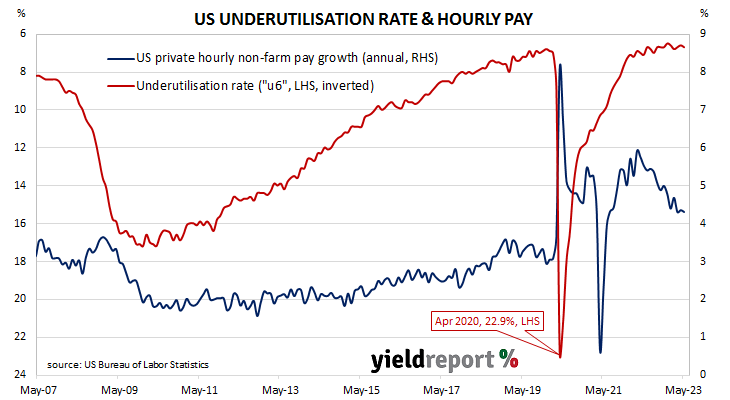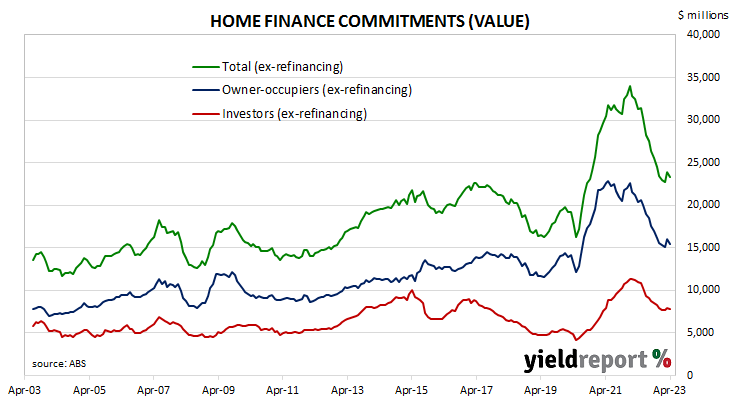Summary: US retail sales up 0.3% in May, more than expected; annual growth rate increases to 1.6%; ANZ: underscores US consumer resilience; Treasury bond yields rise; rate-cut expectations firm; rises in ten of thirteen retail categories; vehicles retailers segment largest single influence on month’s result.
US retail sales had been trending up since late 2015 but, commencing in late 2018, a series of weak or negative monthly results led to a drop-off in the annual growth rate below 2.0%. Growth rates then increased in trend terms through 2019 and into early 2020 until pandemic restrictions sent it into negative territory. A “v-shaped” recovery then took place which was followed by some short-term spikes as federal stimulus payments hit US households in the first and second quarters of 2021.
According to the latest “advance” numbers released by the US Census Bureau, total retail sales increased by 0.3% in May. The result was greater than the flat result which had been generally expected but it was slightly less than April 0.4% rise. On an annual basis, the growth rate accelerated from April’s revised rate of 1.2% to 1.6%.
“These data underscore consumer resilience and indicate a steady contribution to growth from real private consumption in Q2,” said ANZ economist Jack Chambers.
The figures came out the same morning as the latest industrial production figures and US Treasury bond yields fell on the day. By the close of business, the 2-year Treasury yield had lost 6bps to 4.65%, the 10-year yield had shed 7bps to 3.72% while the 30-year yield finished 6bps lower at 3.84%.
In terms of US Fed policy, expectations of a lower federal funds rate in 2024 firmed. At the close of business, contracts implied the effective federal funds rate would average 5.11% in July, 3bps more than the current spot rate, and then increase to an average of 5.245% in August. December futures contracts implied a 5.22% average effective federal funds rate while June 2024 contracts implied 4.575%, 50bps less than the current rate.
Ten of the thirteen categories recorded higher sales over the month. The “Motor vehicle & parts dealers” segment provided the largest single influence on the overall result, rising by 1.4% over the month and contributing around 0.26 percentage points.
The non-store segment includes vending machine sales, door-to-door sales and mail-order sales but nowadays this segment has become dominated by online sales. It now accounts for over 16% of all US retail sales and it is the second-largest segment after vehicles and parts.



